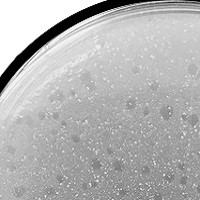Gordonia phage Vaegon
Add or modify phage thumbnail images to appear at the top of this page.
Know something about this phage that we don't? Modify its data.
| Detailed Information for Phage Vaegon | |
| Discovery Information | |
| Isolation Host | Gordonia terrae NRRL B-16283 |
| Found By | E. Grace Starr |
| Year Found | 2017 |
| Location Found | Chapel Hill, NC USA |
| Finding Institution | Durham Technical Community College |
| Program | Science Education Alliance-Phage Hunters Advancing Genomics and Evolutionary Science |
| From enriched soil sample? | No |
| Isolation Temperature | 27°C |
| GPS Coordinates | 35.985615 N, 79.079408 W Map |
| Discovery Notes | On August 27, 2017 at 12:07pm, a soil sample was collected from an organic compost pile located between the two primary barns at Spence’s Farm in Chapel Hill, NC. The sample was taken from the base of the compost pile, at a depth of approximately 2 inches toward the center of the compost pile, with an approximate ground soil temperature of 77.1ºF and an approximate compost temperature of 81.3ºF. The sample consisted of moist, dark, rich earthen compost of well broken down organic matter consisting primarily of garden plants and roots as well as various farm animal feces (chicken, horse, pig, goat). |
| Naming Notes | When Dr. J. Noto referred to me as the "Mother of Phages" in reference to the 4 very healthy phages I had isolated (2 were adopted), I simply had to seize the moment. Thus, Vaegon is a tip of the hat to Drogon in Game of Thrones. There are so many reasons why. |
| Sequencing Information | |
| Sequencing Complete? | No |
| Sequencing Facility | University of Pittsburgh Genomics and Proteomics Core Laboratories |
| Genome length (bp) | Unknown |
| Character of genome ends | Unknown |
| Fasta file available? | No |
| Characterization | |
| Cluster | Unclustered |
| Subcluster | -- |
| Lysogeny Notes | While Vaegon has not demonstrated lysogeny, another of the phages I isolated from the same environmental sample did. I believe it's possible Vaegon could be capable of lysogeny and we simply haven't seen that yet in the limited time we've had to experiment. |
| Annotating Institution | Unknown or unassigned |
| Annotation Status | Not sequenced |
| Plaque Notes | Vaegon consistently creates clear and well structured circular plaques ranging from 1.5-2mm. It is very fast at lysing an entire plate, and plates should be checked at 24 hours. |
| Morphotype | Siphoviridae |
| Has been Phamerated? | No |
| Publication Info | |
| Uploaded to GenBank? | No |
| GenBank Accession | None yet |
| Refseq Number | None yet |
| Archiving Info | |
| Archiving status | Archived |
| SEA Lysate Titer | 3.2x10^9 |
| Pitt Freezer Box# | 49 |
| Pitt Freezer Box Grid# | E7 |
| Available Files | |
| Plaque Picture | Download |
| EM Picture | Download |
